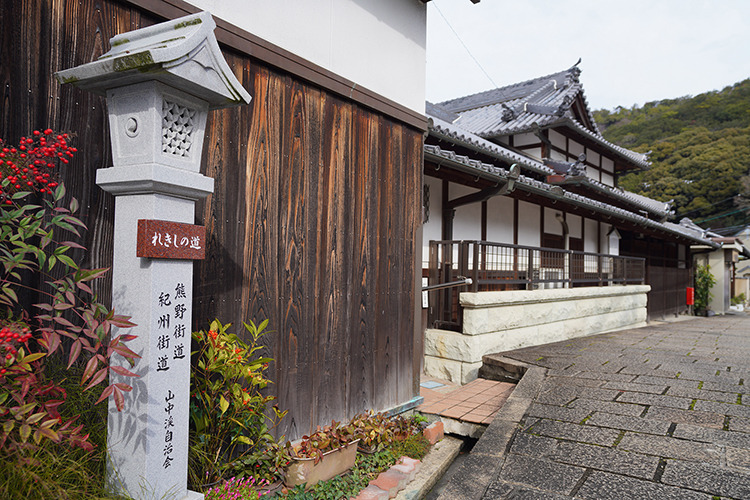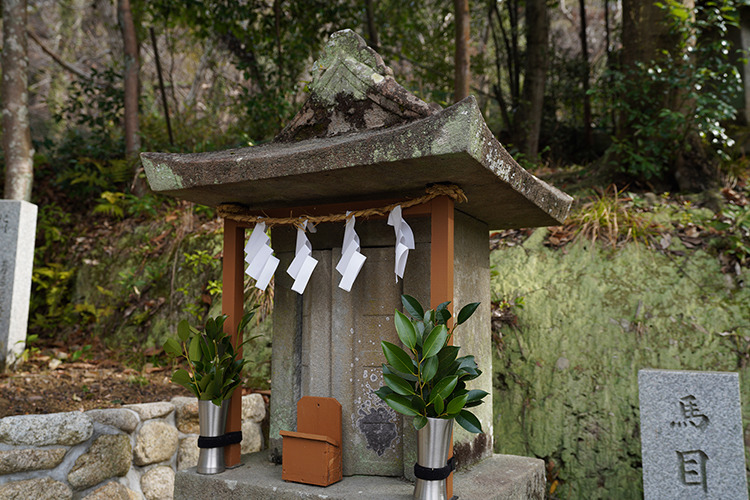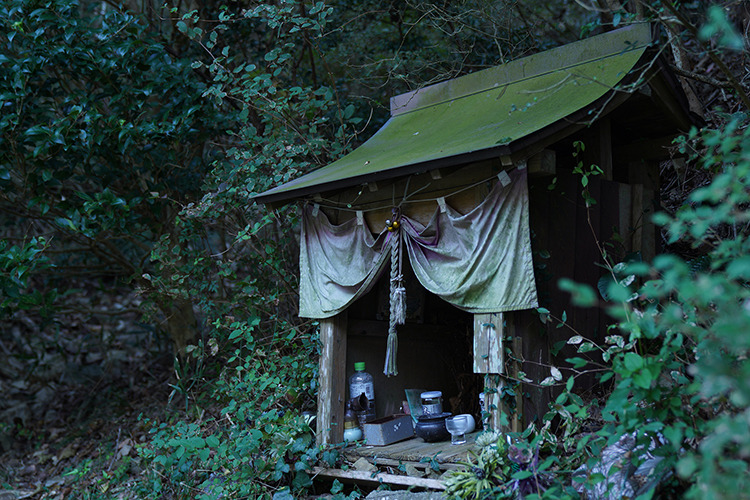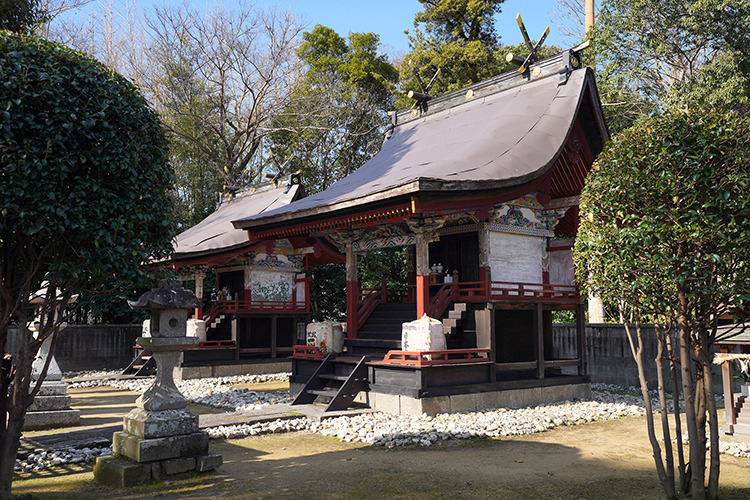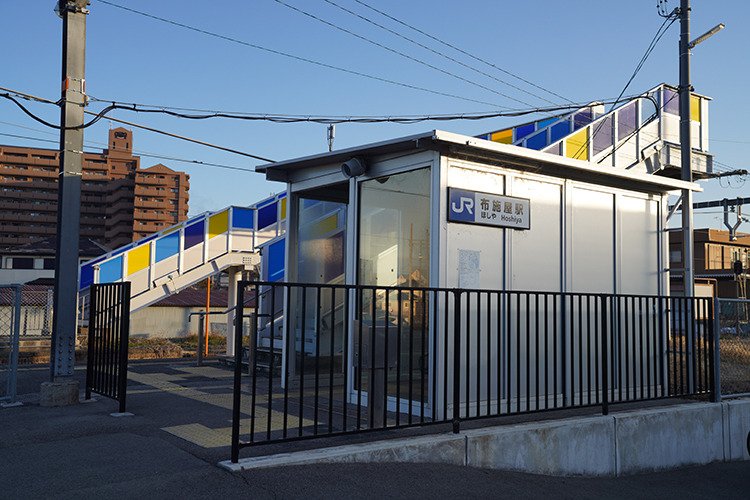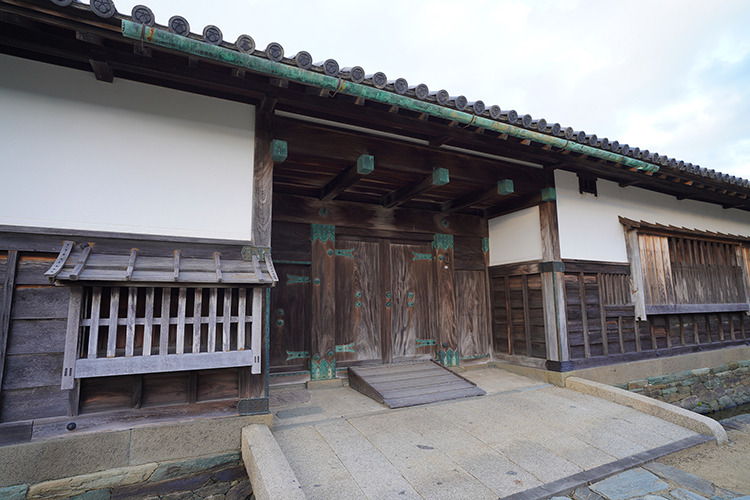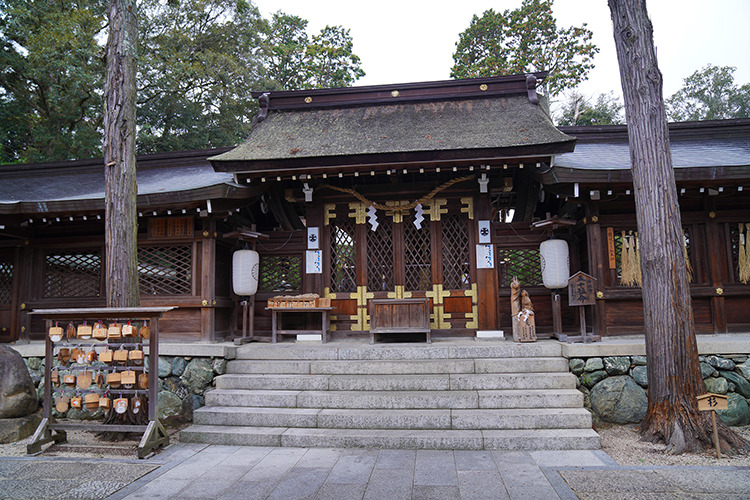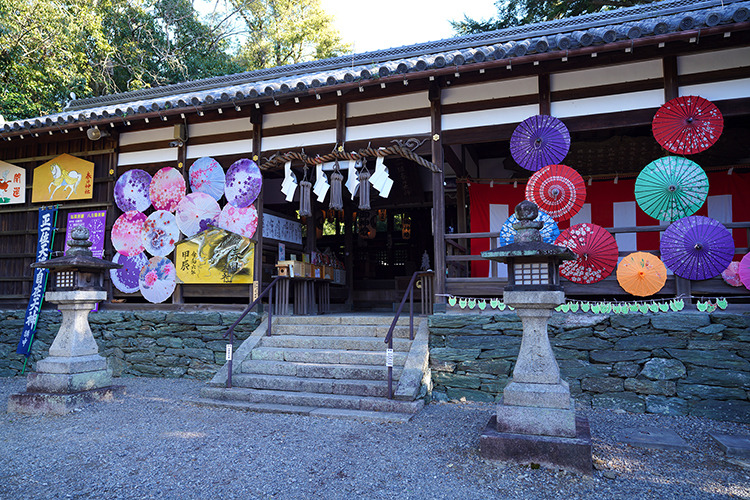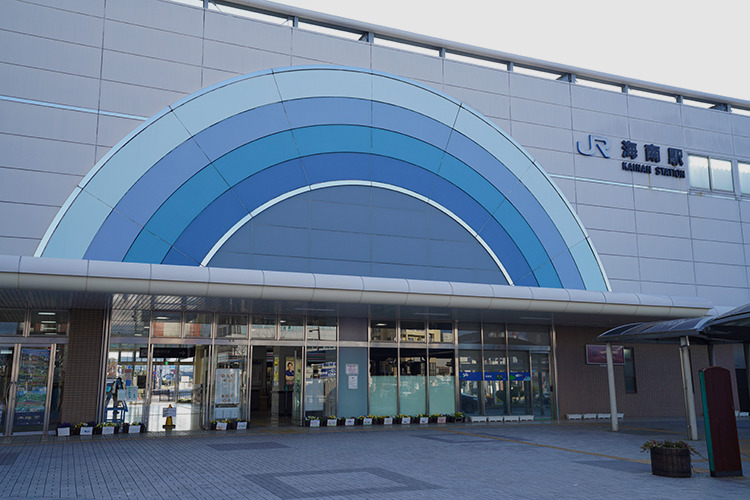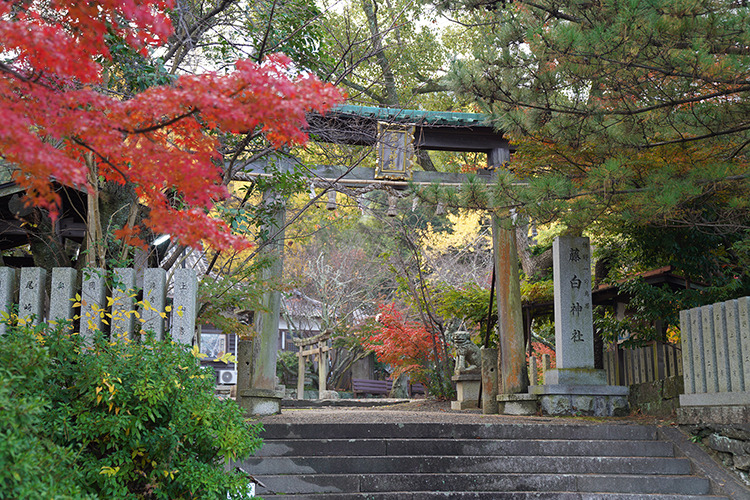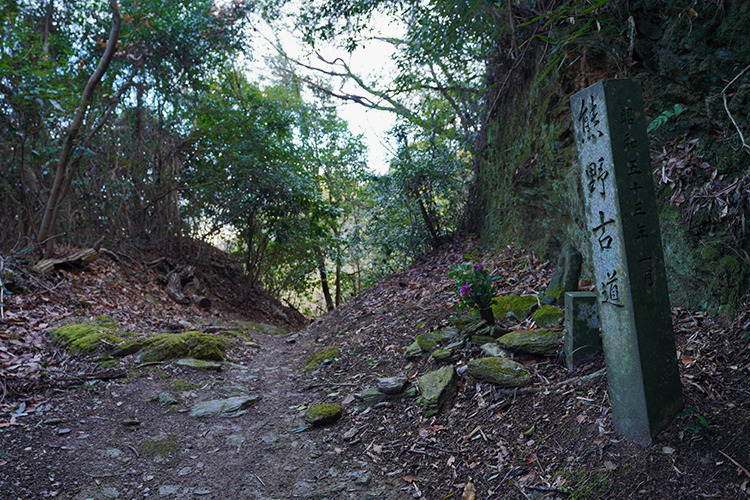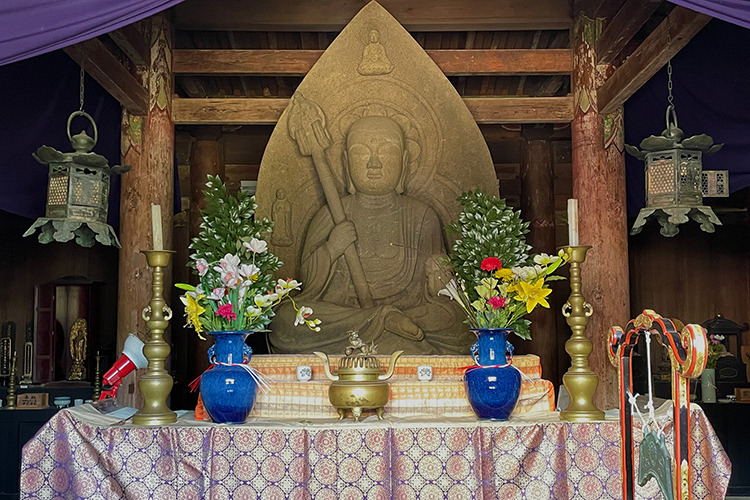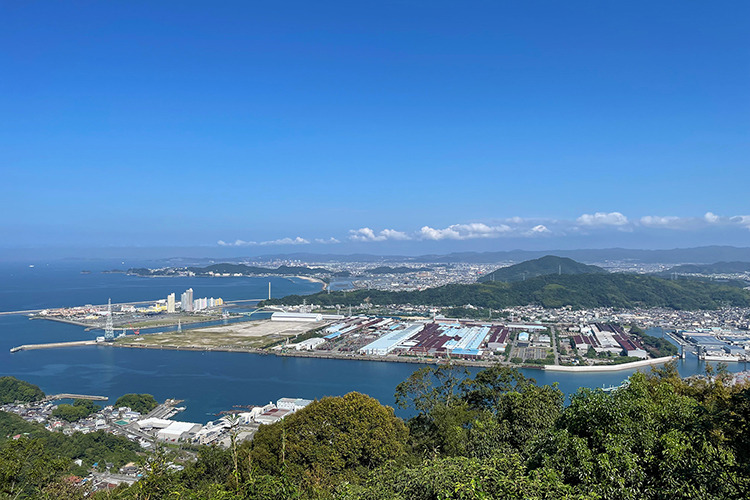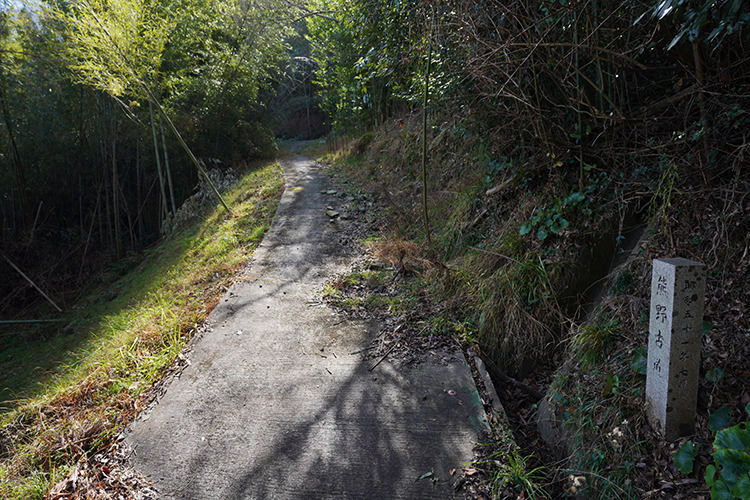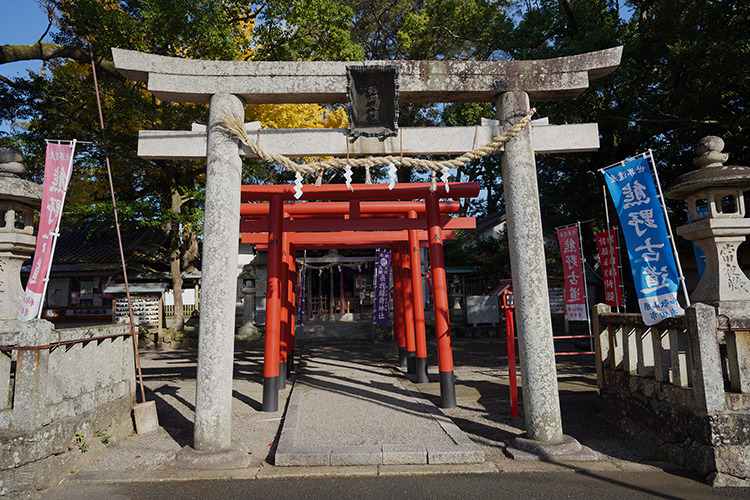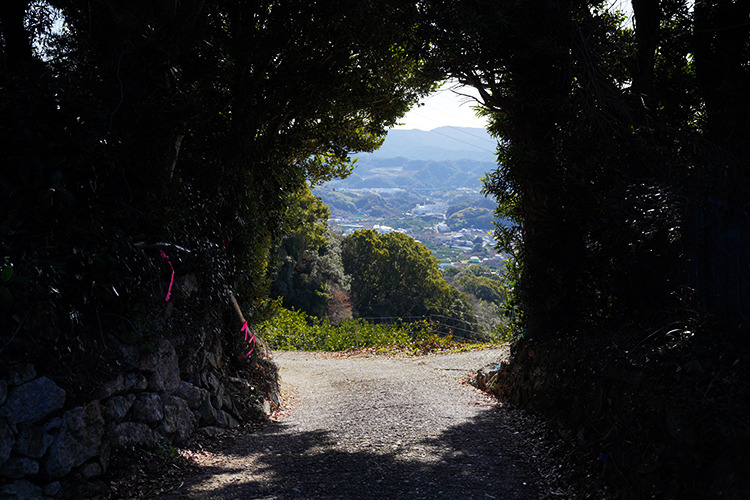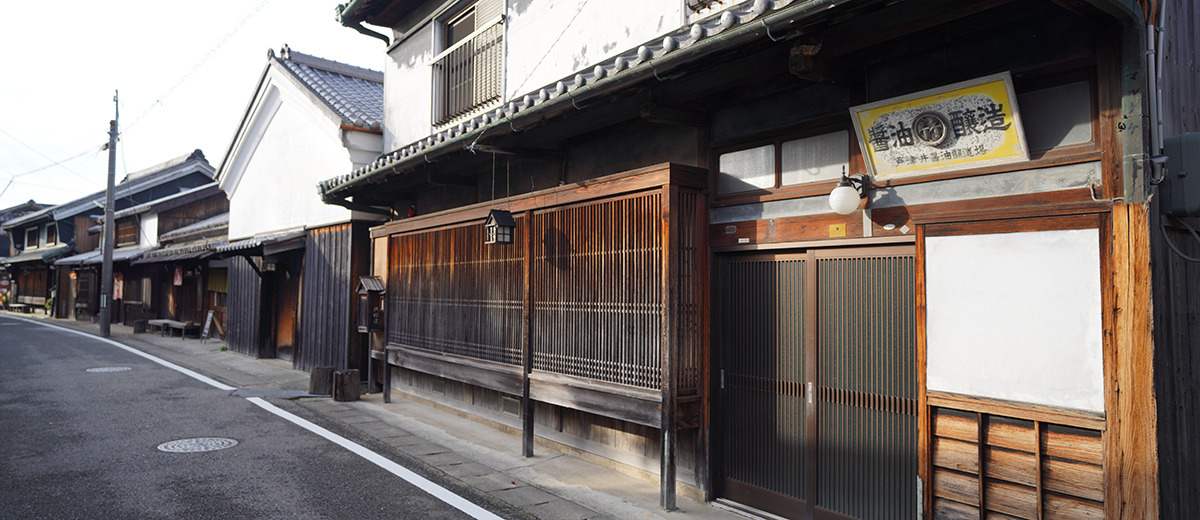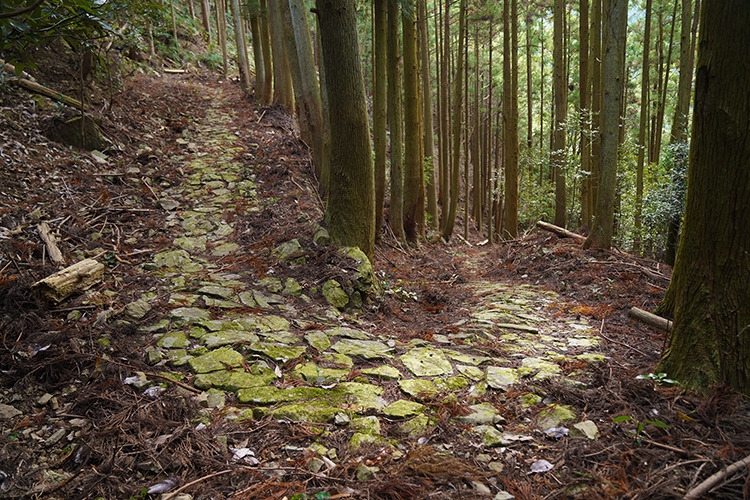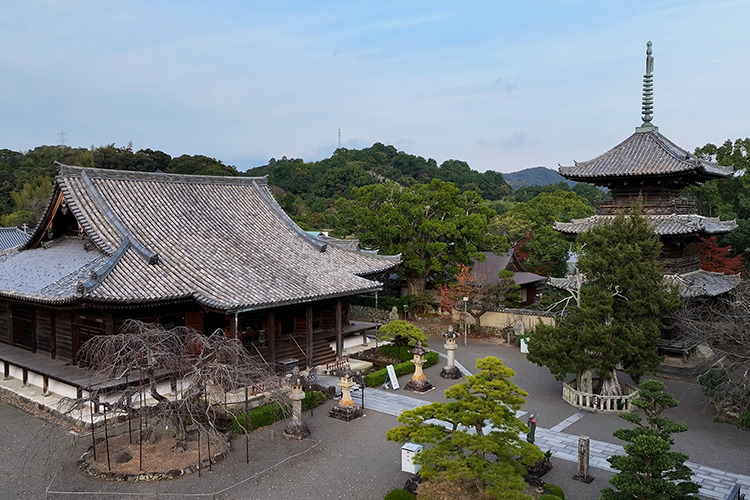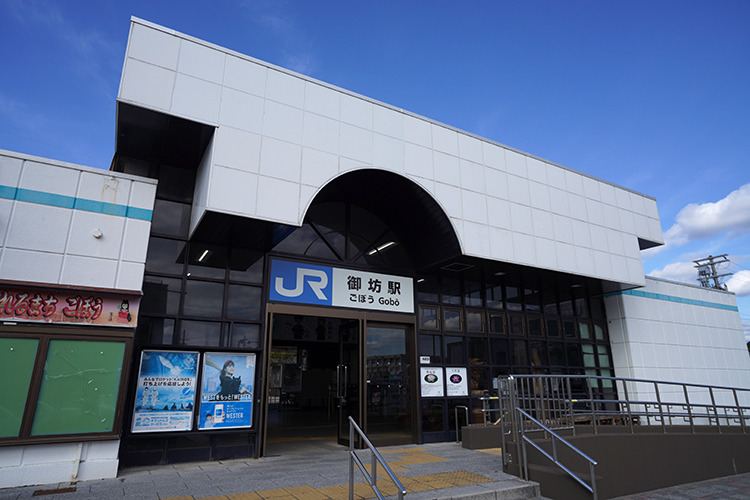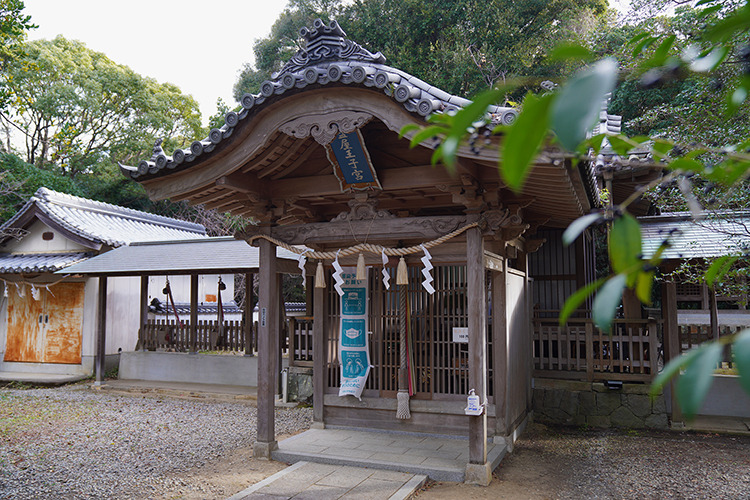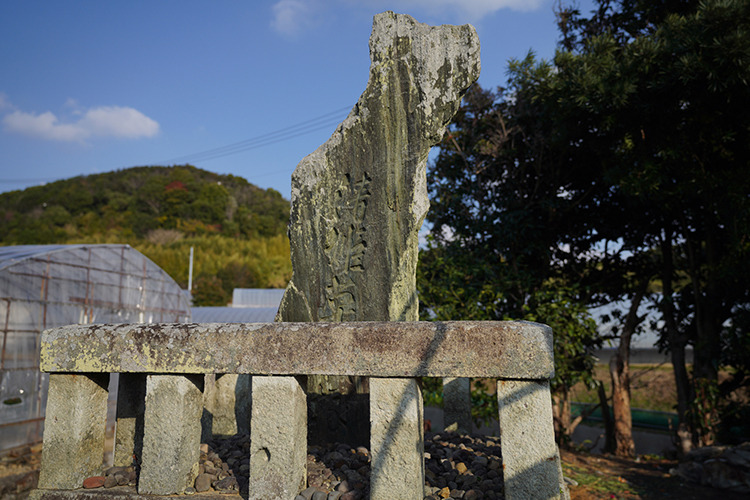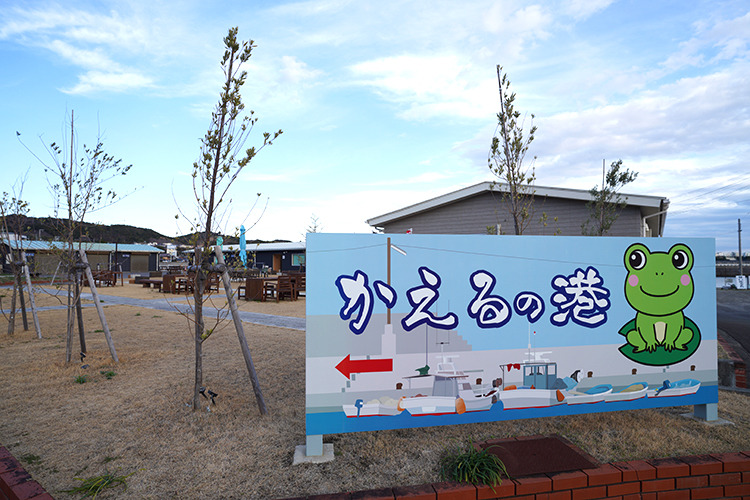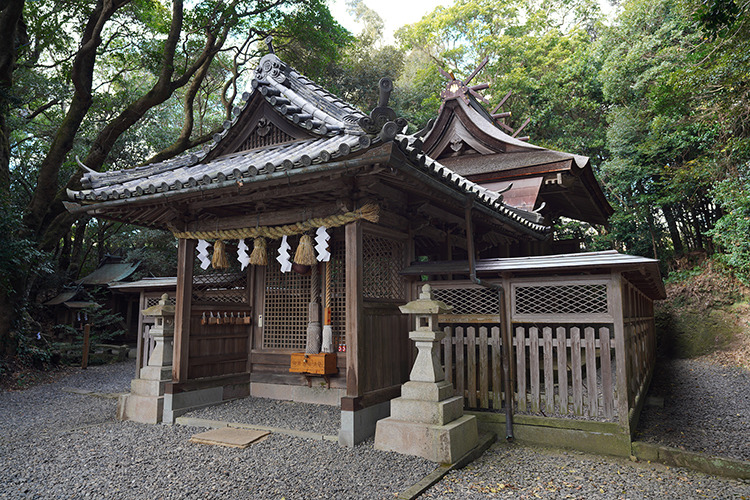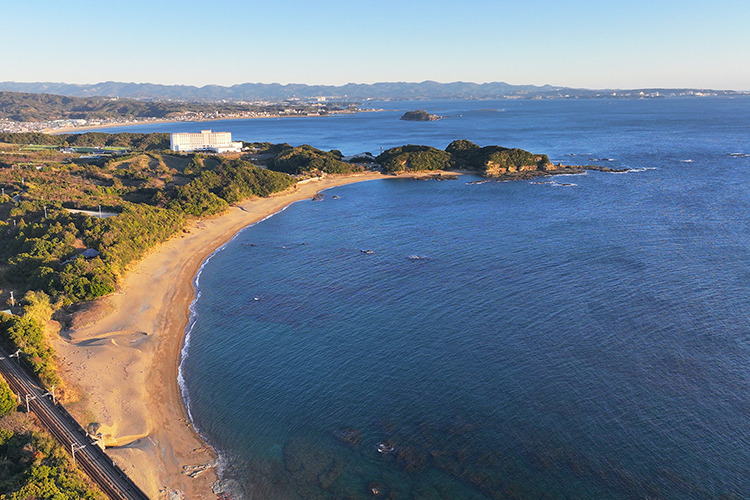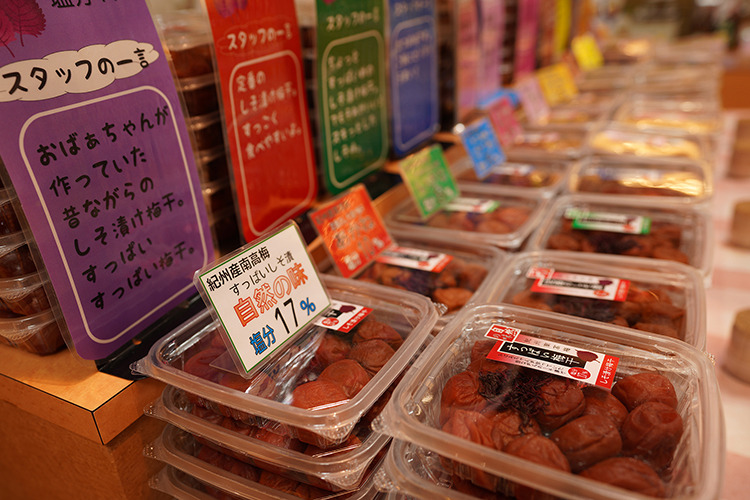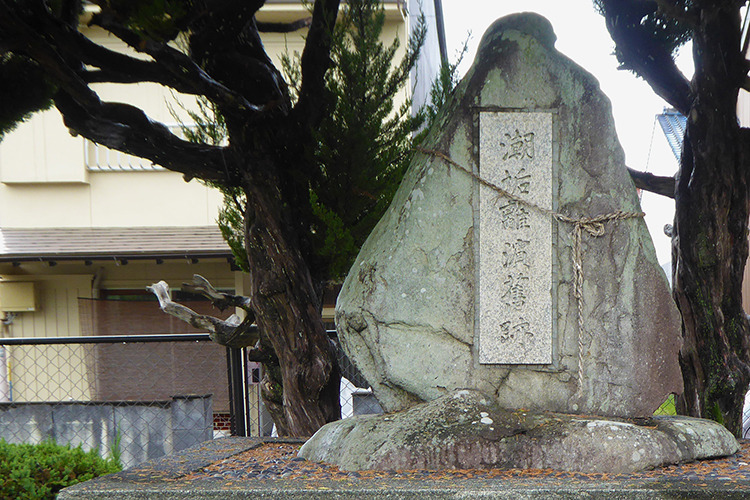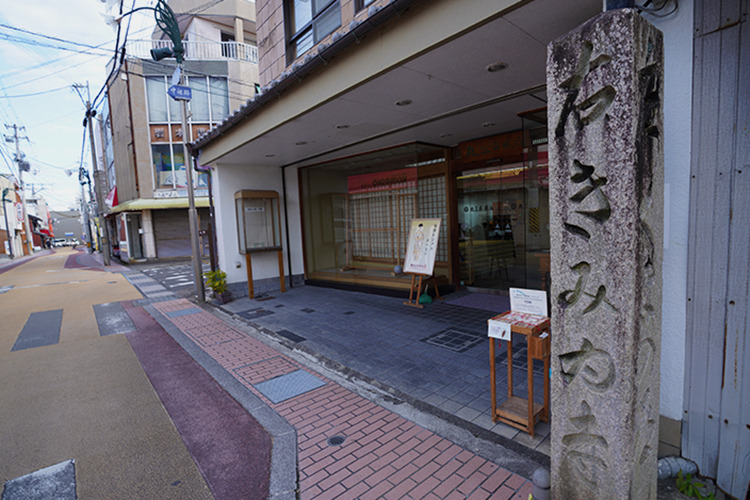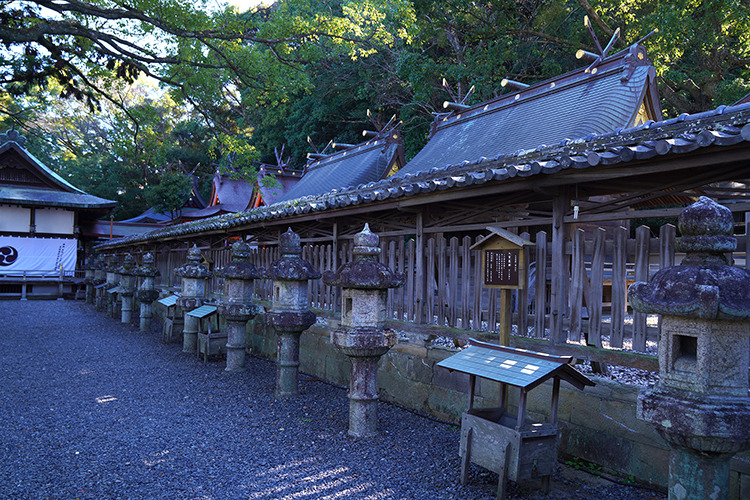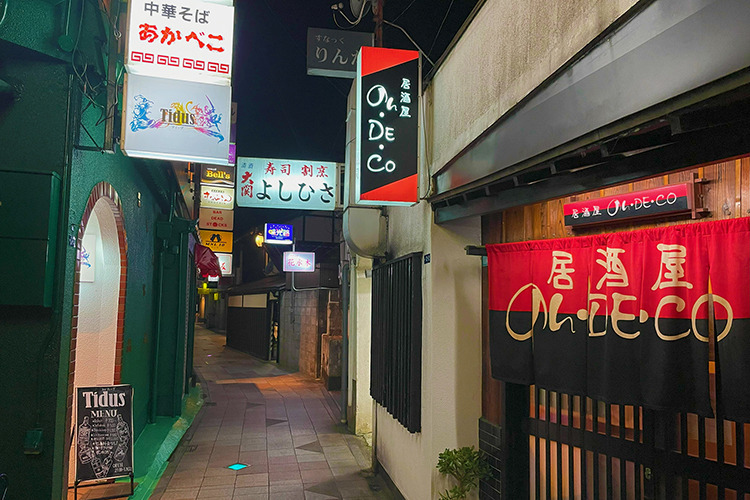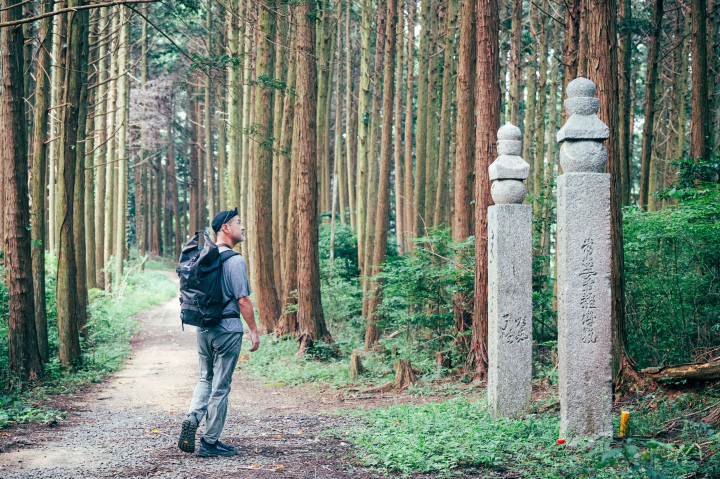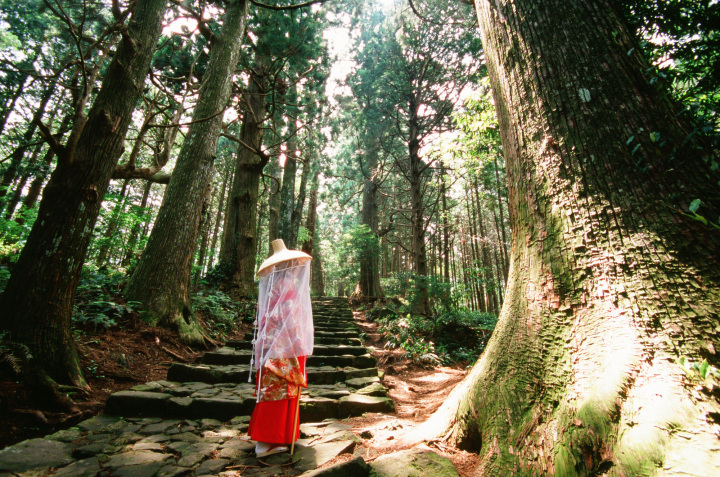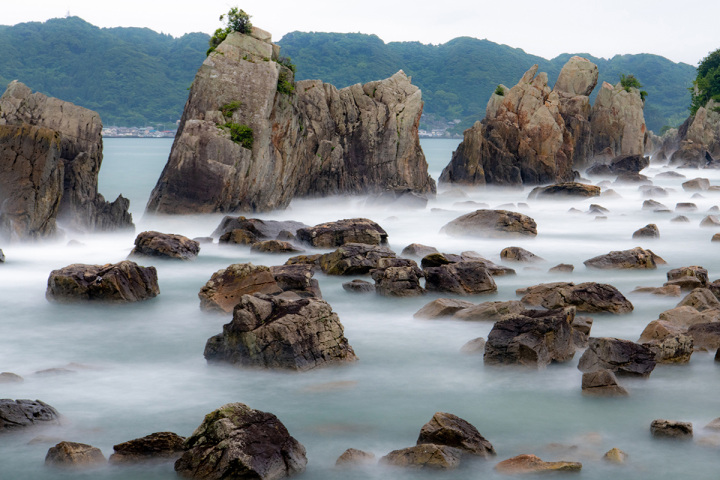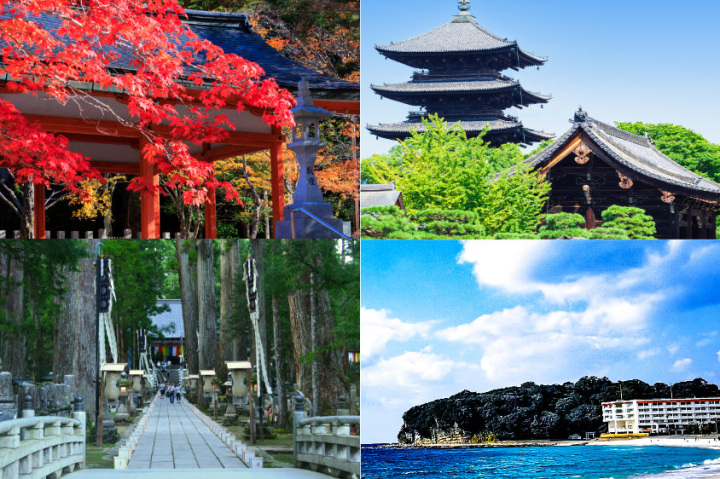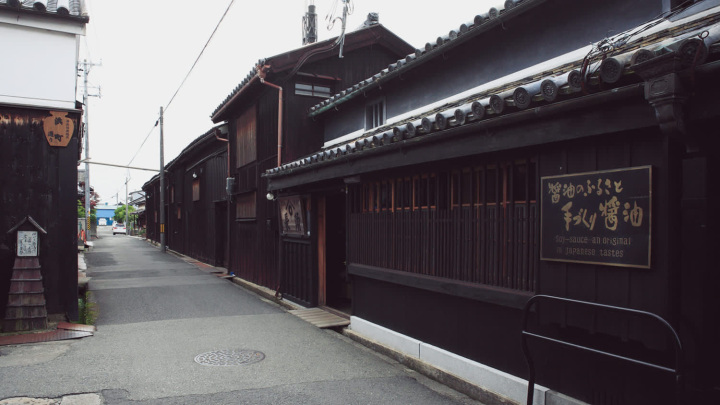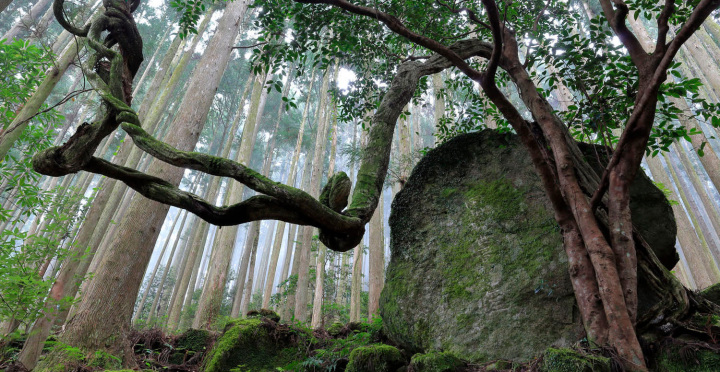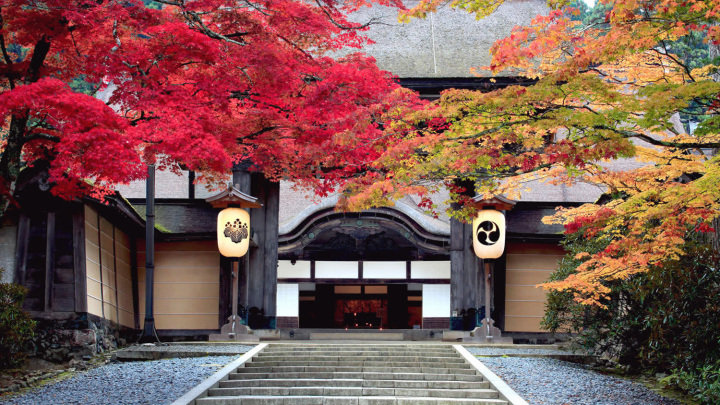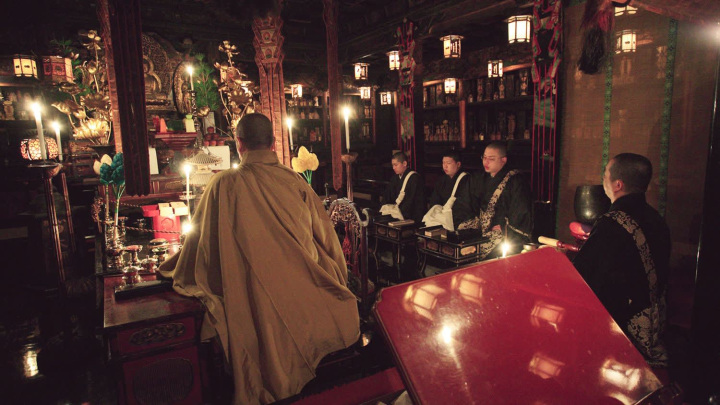Kumano Kodo Kiiji Itineraries
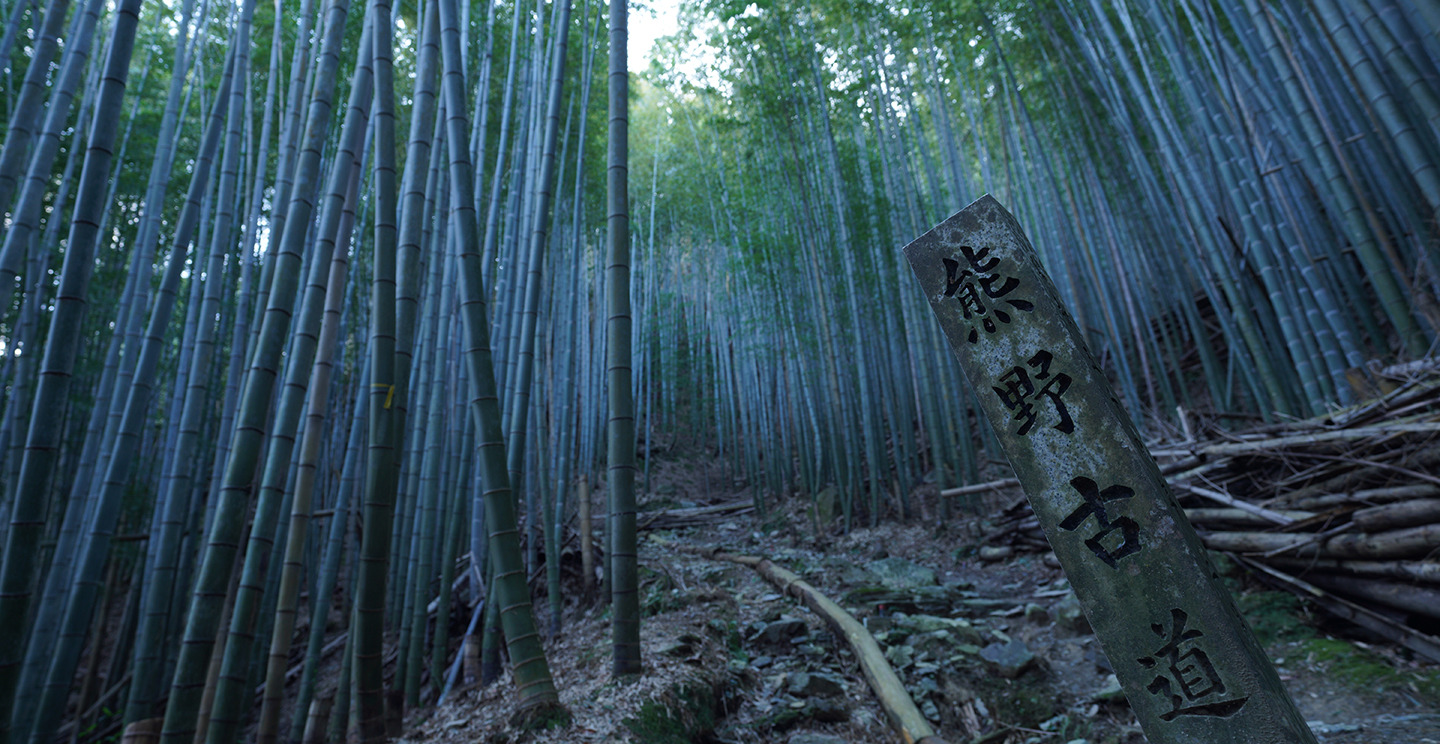
- Spring
- Summer
- Autumn
- Winter
- Time
- 6 days and 5 nights
- Transportation
- Train/ walk
Through distinctive towns—Kumano Kodo Kiiji Course
Kiiji is the main route to Kumano Sanzan and leads to Nakahechi, the most popular route for Kumano pilgrims. From Jonangu in Kyoto, the route takes a riverboat down the Yodo-gawa River to the Tenmabashi in Osaka and heads south, making pilgrimages to small oji shrines along the way. From the Onoyama-toge Pass, the route enters the Wakayama Plain and crosses the Kino-kawa River to Fujishiro-jinja. From here, the route crosses the Fujishiro-zaka Slope, the Itoga-toge Pass, the Shishigase-toge Pass and other difficult places where travellers of the time had a hard time, to reach Tanabe.
Take a train from Wakayama Station to Yamanakadani Station, the nearest station to the start of the trek. The train takes about 20 minutes. Incidentally, there is a tourist information center at Wakayama Station.
Yamanaka-shuku
Yamanaka-shuku is on the north side of Onoyama-toge Pass in a small collection of homes. In the golden age of the pilgrimage this post-town was a very prosperous stopover with more than 20 inns.
Umame-oji
This is the first of dozens of small oji shrines that line the Kiiji route. Oji are subsidiary shrines of the Kumano Grand Shrines that protect and guide pilgrims. These shrines house the “child deities” of Kumano and historically served as places of both worship and rest.
Onoyama-toge Pass
The road leads up and over the Onoyama-toge Pass (180m above sea level) before descending sharply on a set of narrow switchbacks, as the Kino-kawa river plains spread out below.
Rikishi-jinja
The shrine is thought to have been built around the end of the 16th century in the Ikkensha Nagare-zukuri style, with “Amano-no-Tajikarao-no-Mikoto” as its deities. It is a representative example of Momoyama period shrine architecture in Wakayama Prefecture.
Overnight in Wakayama
Since there are no accommodations near Hoshiya Station, we will take the train to Wakayama Station and stay overnight at a hotel near the station. Those who are confident in their leg strength can walk to Kainan Station.
The Former Nakasuji Residence
This impressive former residence of a local leader is an example of classic Japanese architecture including a large hall, front gate, kitchen, and warehouse which is well preserved. It was built in 1852 and is designated as an important national cultural property. Access is limited so check on arrival if entry is permitted.
Itakiso-jinja
This is a famous shrine dedicated to "Itakeru-no-Mikoto'', the god who introduced trees to Japan. Therefore, worshippers from the forestry and lumber industry often pray and give thanks here. Onsite are chainsaw art carvings and the stump of a sacred 1,000-year-old tree. Climbing through it wards off misfortune. There is a 6th century tomb nearby.
Kasuga-jinja
The deity is Ame-no-Oshitarashihiko-no-Mikoto, a highly prestigious shrine said to have been founded in the Nara period (710-794). After leaving here, climb the small hill to the west, and you will see the Matsushiro-oji on your right.
Overnight in Kainan
Accommodations are available around Kainan Station. Evening meals are available at restaurants in the area.
Fujishiro-oji & Fujishiro-jinja
Fujishiro-oji is one of the prestigious five Gotai-oji shrines. It was a key stopping point for pilgrims including those from the imperial family and aristocrats. On the shrine grounds are gigantic sacred, thousand-year-old camphor trees, one of which is said to protect children, and has an access ramp so that worshippers can touch the tree and receive its regenerative powers. In the Gongen Hondo there are impressive Buddhist statues representing the three main deities of the Kumano faith.
Fujishiro-zaka
From Fujishiro-oji the trail climbs the Fujishiro-zaka slope out of the valley through sections of towering bamboo groves.
Fujishiro Toge-oji & Jizobu-ji
Fujishiro Toge-oji is located on the temple grounds of Jizobu-ji. The principal image of Jizobu-ji is a large stone statue of Jizo Bosatsu measuring over three meters in height and dates from 1323.
Gosho-no-Shiba
Behind the Jizobu-ji to the right along a small hard-to-find trail beside the public toilets leads to the Gosho-no-Shiba viewpoint, a panoramic view of Kainan and the historic Wakanoura area. This is a great rest spot.
Hai-no-toge Pass
After passing the Ichitsubo-oji, the road becomes steeper and the slope continues to get steeper from the start of the Kutsukake trailhead to the top of the pass. The south side descends into the Arida-gawa river basin through orange orchards with views across the valley.
Column
Arida Mandarin Oranges
This is orange country! Arida is famous throughout Japan for its delicious mandarin oranges, which grow on steep terraced orchards, exposing them to an abundance of sunlight. Approximately 450 years ago, Ito Magoemon, a farmer, brought the first orange tree here from Kumamoto Prefecture in southern Japan which sparked the beginning of the industry which now is one of the country’s largest producers.
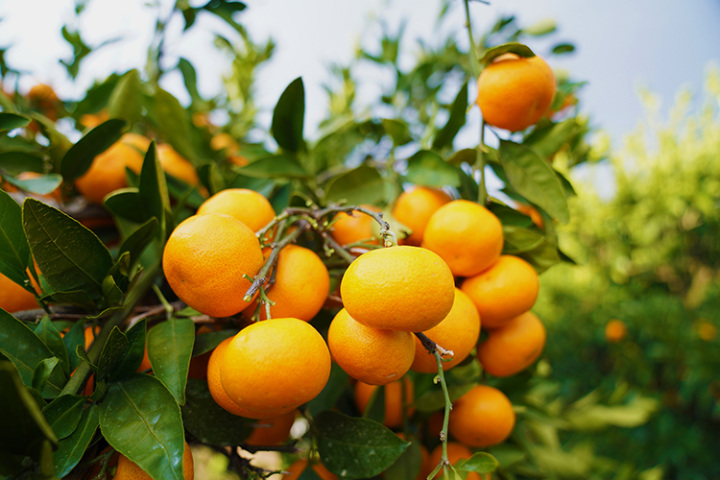
Itoga Inari-jinja
This is the oldest know Inari-jinja shrine in Japan dating from 652. There are large camphor trees and a visitor center next door. The small center has limited English, but some period displays.
Itoga-toge Pass
During the Edo period (1603-1867) at this pass there were two tea houses which served oranges to pilgrims.
Column
Yuasa Soy Sauce
Yuasa is famous as the birthplace of soy sauce. There is an area on the northside of town next to the canal that has preserved these traditional houses and factories, making for an attractive side trip. This area has the lengthy name of “Yuasa Important Preservation District for Group of Traditional Buildings”.
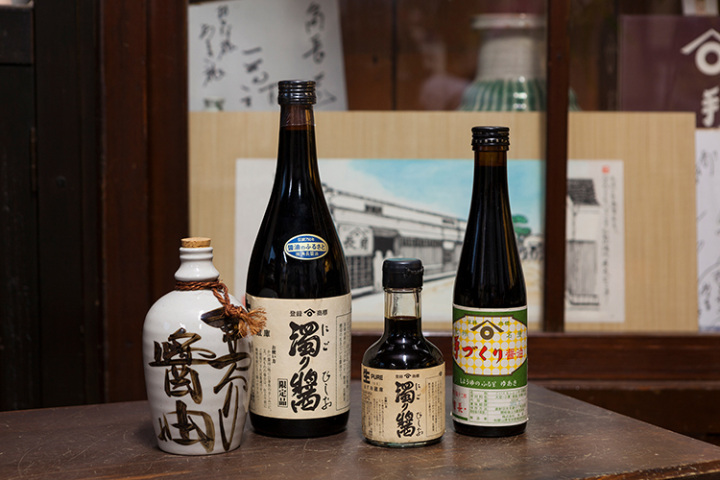
Overnight in Yuasa
There are several accommodations in Yuasa. Since few restaurants are open in Yuasa at night, it is advisable to check in advance.
Shishigase-toge Pass
After passing through the Iseki-shuku remains, now a quiet residential area, but once a thriving area of inns, the road gradually ascends through rice paddies, and eventually into a forestry road. There is a large clearing at the pass where a tea house once stood. The descent follows a long creek-side road.
Dojo-ji Temple
Doji-ji temple was believed to be founded in 710 and therefore one of the oldest in Japan. The expansive grounds feature a gate, worship hall, and three-story pagoda. The main wooden statue of Senju Kanno dates from the Heian period and is a National Treasure. The foundation myth relates to a young girl called Kaminaga-hime or long-haired princess who found a statue of Senju Kannon in the harbor. Also, the temple is famous for the legend of Anchin and Kiyohime dating from the 10th century which has been adapted for well-known Noh and Kabuki dramas.
- Address
- 日高郡日高川町鐘巻1738
- Telephone Number
- +81-(0)738-22-0543
Overnight in Gobo
There are several accommodations in central Gobo. There are many restaurants where you can enjoy local delicacies, so it is a good idea to enjoy a meal.
Column
Hidaka-gawa River
Gobo is built around the Hidaka-gawa River. Historically pilgrims used ferries to cross. In the legend of Anchin and Kiyohime, this is where the princess transforms into a serpent snake to seek revenge on her betraying lover.
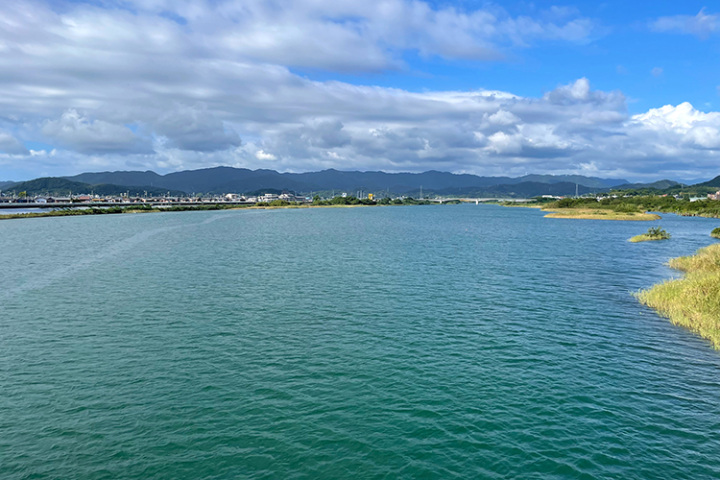
Shioya-oji
Up a steep stone staircase leads to the cozy shrine grounds of Shioya-oji, one of the oldest oji shrines on the Kumano Kodo. It is believed that worshippers who pray here are blessed with beautiful children.
Kiyohime-no-Zorizuka
This is one of the historic sites of the Anchin and Kiyohime legend. When Kiyohime found Anchin trying to escape by crossing the Hidaka-gawa River, she hung her sandals on a tree branch and followed him barefoot, hence the name Zorizuka. Zori, is traditional straw sandals.
Overnight in Inami Port
There are several accommodations around Inami Port. There are few restaurants open at night in Inami, so we recommend checking in advance.
Kirime-oji-jinja
Kirime-oji-jinja is tucked into a protected clearing surrounded by hills covered with a rich diversity of native evergreen trees. This is also one of the prestigious Gotai-oji and historical lodging site for the imperial family when on pilgrimage.
Column
Ume Country
One of the main agricultural products of this region is Ume, or Japanese apricot (often mistranslated as plum). You can begin to see ume orchards and drying ume racks to make umeboshi, which are salt pickled. Umeshu is a rich, sweet ume liqueur.
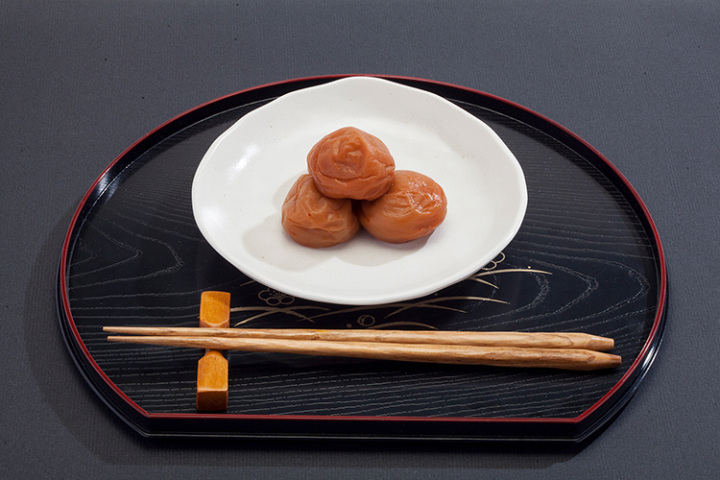
Senri-no-Hama Beach
Senri-no-Hama beach for a few hundred meters, which is a local nesting site for loggerhead sea turtles.
Kishu Umeboshi-kan
As you enter Minabe, there is an imposing green factory called the Kishu Umeboshi-kan, with a souvenir shop selling a multitude of ume based products and umeboshi tasting.
Shiogori-hama Remains
Before heading into the sacred Kumano mountains on the Nakahechi route, pilgrims would perform salt-water purification rites in the ocean called Shiogori. This monument, which sits in a park is the original site, but modern land reclamation projects have expanded the landscape further south.
Michiwake-ishi Signpost
In the heart of Tanabe on a retro shopping street, tucked against a store front is a large stone signpost. This is the end of the Kiiji route which splits into the Nakahechi heading inland and the Ohechi continuing south along the coast. Continue into the city center to find the Kii-Tanabe station and Tokei-jinja shrine.
Tokei-jinja Shrine
Tokei-jinja Shrine was established in 419 A.D and derives from Kumano Hongu Taisha. In the times of abdicated Emperor Shirakawa (1053-1129), the Kumano deities were enshrined in Tokei-jinja Shrine. Many imperial and aristocratic pilgrims paid homage here praying for safe passage into the realm of Kumano. Because the Kumano deities were manifested in Tokei-jinja Shrine, some pilgrims didn’t make the voyage into the heart of Kumano, but prayed here, subsequently worshipping the Kumano Sanzan from afar.
- Address
- 田辺市東陽1-1
- Telephone Number
- +81-(0)73-922-0155
- Open
- 08:30 - 17:00
Overnight in Tanabe
Accommodations are available around Kii-Tanabe Station. The compact entertainment area in front of the station is called “Ajikoji” and is packed with over 200 restaurants and Japanese style pubs (izakaya). Every alley is full of quaint places to eat and drink. Tanabe is a safe place for non-Japanese speakers to fully experience delicious local cuisine in an authentic environment. Kanpai!
